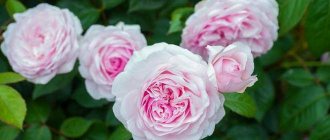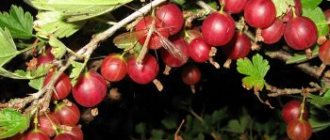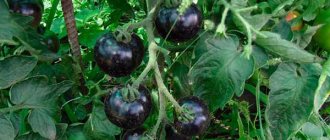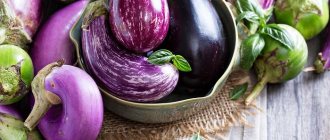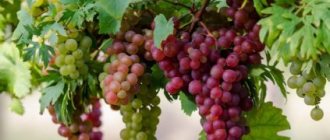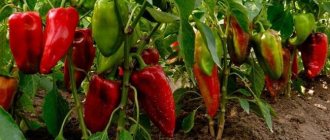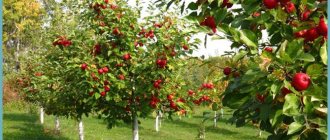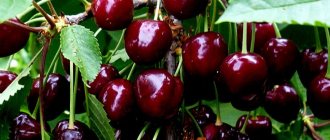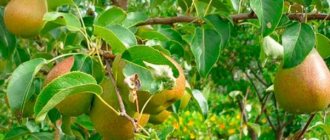Peach flamingo description
- Online store
- About Us
- ABOUT
- Our exhibitions
- Completed projects
- What are we doing
- Our prices
- Contacts
- Houseplants
- Dendrology
- Interesting things about plants
- Plants and health
- Plants and business
- Styles
- landscape architecture
- Landscape design
- Design Online
- Interesting things about the landscape
- Landscape Masters
- Houseplants
- Conifers
- Deciduous trees
- Flowering shrubs
- Deciduous shrubs
- Fruit trees
- Flowers for the garden
- Herbs
- climbing plants
- Plants for ponds
- Glossary of terms
- Photo
- Desktop wallpaper
- Screensavers
- Current themes of the season
- All about indoor flowers
- Everything about garden plants and flowers
- landscape architecture
- Buy/Sell
- Miscellaneous
- Your Garden
- Archive
- Ecology
- Reserves
- Literature
- Games
Prunus persica Flamingo
Flamingo peach (Prunus persica “Flamingo”) is an early ripening peach variety.
Brought out in the Nikitsky Botanical Garden from crossing the Konservny Ranniy variety and the Yubileiny variety. Authors: Ryabov I.N., Ryabova A.N. It is a medium-sized tree with a dense, spherical, slightly raised crown. Shoot-forming ability is high. The shoots are long, straight, mostly with group placement of buds along the entire length. Flower buds are ovoid. The leaves are pointed, medium in size. Flowers on rose-shaped branches. Blooms in mid-season.
The fruiting period begins 3 years after planting. Productivity is high 200/240 c/ha.
The fruits are large, weighing 140-180 g, broadly oval in shape. The apex of the fruit is slightly blunt with a deep pit in the form of a groove. The ventral suture is medium, deepening towards the apex. The skin has a slight suede-like pubescence, is not removed from the fruit, has a light cream color, with a blurred raspberry-carmine blush, in the form of streaks, which occupies 20% of the surface.
The Flamingo fruit is characterized by white pulp, without redness at the seed chamber, juicy, gristly in consistency, harmonious taste, with a moderate predominance of acid. The stone is medium in size and does not separate from the pulp. The fruits ripen at the end of July - early August.
Frost resistance zone : 5a (-23°C).
Location: thermophilic, needs sunny and protected from the wind places. Moderate watering is necessary, especially during the period of ovary and fruit ripening. Loves light, loamy and sandy calcareous soils with moderate moisture.
Planting : planting is recommended in the spring, but it can also be done in the fall (then it is necessary to mulch the tree trunk circle and add it to a height of 20-30 cm). The planting hole must be at least 0.7 x 0.7 m, according to the 4 x 4 m pattern. 10 kg of overripe manure and 150 g of superphosphate are mixed with soil and the seedling is filled with the root system straightened. The tree trunk circle must be compacted to the edges, watered well (4-5 buckets) and mulched with a layer of compost to a height of 8-10 cm.
Diseases and pests : diseases - powdery mildew, leaf curl, clasterosporia, fruit rot, moniliosis, cytospora drying of shoots and branches. Pests are plum and oriental codling moths, fruit striped moths, large and green peach aphids, fruit and spider mites.
Care : requires moderate watering and shaping pruning. For improved yield, the improved bowl pruning method is used. After planting the seedling, all side branches must be removed. 3-4 skeletal branches are left 10-20 cm apart. The conductor must be cut at the base of the upper side branch. In the second year, branches of the 1st order are shortened if they are longer than 50 cm or change the direction of growth. Over the next years, pruning should be aimed at fruiting. Anti-aging pruning is carried out from the swelling of the buds to the beginning of flowering. When freezing, pruning is carried out after the appearance of tops on the trunks and branches.
Reproduction : seedlings are grafted onto many rootstocks. For dry, sandy, chernozem soils it is best recommended on apricot seedlings, for moist acidic soils - on cherry plum, blackthorn and plum.
Use: fruits are consumed fresh, for canning, making liqueur, marmalade, and juice. Peach oil is made from the seeds.
Flamingo peach (Prunus persica “Flamingo”) is an early ripening peach variety. Brought out in the Nikitsky Botanical Garden from crossing the Konservny Ranniy variety and the Yubileiny variety. Authors: Ryabov I.N., Ryabova A.N.
It is a medium-sized tree with a dense, spherical, slightly raised crown. Shoot-forming ability is high. The shoots are long, straight, mostly with group placement of buds along the entire length. Flower buds are ovoid. The leaves are pointed, medium in size. Flowers on rose-shaped branches. Blooms in mid-season.
The fruiting period begins 3 years after planting. Productivity is high 200/240 c/ha.
The fruits are large, weighing 140-180 g, broadly oval in shape. The apex of the fruit is slightly blunt with a deep pit in the form of a groove. The ventral suture is medium, deepening towards the apex. The skin has a slight suede-like pubescence, is not removed from the fruit, has a light cream color, with a blurred raspberry-carmine blush, in the form of streaks, which occupies 20% of the surface.
The Flamingo fruit is characterized by white pulp, without redness at the seed chamber, juicy, gristly in consistency, harmonious taste, with a moderate predominance of acid. The stone is medium in size and does not separate from the pulp. The fruits ripen at the end of July - early August.
Frost resistance zone : 5a (-23°C).
Location: thermophilic, needs sunny and protected from the wind places. Moderate watering is necessary, especially during the period of ovary and fruit ripening. Loves light, loamy and sandy calcareous soils with moderate moisture.
Planting : planting is recommended in the spring, but it can also be done in the fall (then it is necessary to mulch the tree trunk circle and add it to a height of 20-30 cm). The planting hole must be at least 0.7 x 0.7 m, according to the 4 x 4 m pattern. 10 kg of overripe manure and 150 g of superphosphate are mixed with soil and the seedling is filled with the root system straightened. The tree trunk circle must be compacted to the edges, watered well (4-5 buckets) and mulched with a layer of compost to a height of 8-10 cm.
Diseases and pests : diseases - powdery mildew, leaf curl, clasterosporia, fruit rot, moniliosis, cytospora drying of shoots and branches. Pests are plum and oriental codling moths, fruit striped moths, large and green peach aphids, fruit and spider mites.
Care : requires moderate watering and shaping pruning. For improved yield, the improved bowl pruning method is used. After planting the seedling, all side branches must be removed. 3-4 skeletal branches are left 10-20 cm apart. The conductor must be cut at the base of the upper side branch. In the second year, branches of the 1st order are shortened if they are longer than 50 cm or change the direction of growth. Over the next years, pruning should be aimed at fruiting. Anti-aging pruning is carried out from the swelling of the buds to the beginning of flowering. When freezing, pruning is carried out after the appearance of tops on the trunks and branches.
Reproduction : seedlings are grafted onto many rootstocks. For dry, sandy, chernozem soils it is best recommended on apricot seedlings, for moist acidic soils - on cherry plum, blackthorn and plum.
Use: fruits are consumed fresh, for canning, making liqueur, marmalade, and juice. Peach oil is made from the seeds.
Varieties of non-freezing peaches
Everyone loves peaches. But, unfortunately, growing them is a risky business. In recent years, this crop has not been frost-resistant at all. Often, after 3-4 years the peach dies.
It is not only the traders who offer non-winter-hardy varieties who are to blame for this, but also ourselves. Indeed, with the help of agricultural technology, the survivability of trees can be significantly increased.
Who isn't afraid of frost...
Peach is not as sissy as it might seem at first glance. Many varieties in a state of deep dormancy can withstand frosts down to -30... -32 C! Although flower buds can die at -21...-23 C. The buds are not afraid of frosts down to -8... -10 C. And only flowers and ovaries die at frosts of -3 C.
Varieties that can tolerate such temperatures are called highly winter-hardy. In normal years they have no damage after wintering, and in severe winters they freeze slightly.
These varieties include: Golden Moscow, Krasnaya Devitsa, Laureat, Fluffy Early, Juicy, Skazka, Flamingo, etc. Peaches had a particularly hard time in the winter of 2006.
At this time, critical temperatures were recorded twice in winter and two recurrent frosts in spring. This year, both old varieties distinguished themselves: Juicy, Fluffy Early, Early-85, and new ones: Andrey Lupan, Vavilovsky, Harmony, Crimean Autumn, Melitopolsky Yasny, Ambassador of Peace, Refreshing, Starting, Anniversary Early.
There are frost-resistant varieties among foreign ones: Boten Kisev, Veit 1111, Iftikhor, Nectagrand, Reliance, Favorita Morettini, Harbinger, etc.
... and frosts too
But the most resistant to spring frosts were Valiant, Veteran, G. Lebedev, Golden Jubilee, Red Haven, Flamingo, and Nectagrand-4 nectarine. They produced crops even when frosts occurred in mid-May.
Flamingo
The Flamingo peach variety was bred in the State Nikitsky Botanical Garden as a result of crossing the Konservny early variety and the Yubileiny variety. Ryabov I.N. and Ryabova A.N. worked hard to create a new variety.
Trees of this variety are often medium-sized, with a dense, spherical, raised crown. High shoot-like ability. The shoots are long, straight, mostly with group placement of buds along the entire length. Flower buds are ovoid. The leaves are pointed, medium in size. The flowers on the branches of Flamingo are pink-shaped.
The peach produces its first harvest in the 3rd year. Flowering begins in the middle period. The yield of the Flamingo variety is high, 200/240 c/ha.
The fruits are quite large in size, weighing about 140-180 g per fruit, broadly oval in shape. The fruit has a slightly blunt apex with a deep groove-shaped pit. The middle ventral suture, which deepens towards the apex. The skin has a slight suede-like pubescence, is not removed from the fruit, has a light cream color, with a blurred raspberry-carmine blush, in the form of streaks, which occupies 20% of the surface.
The Flamingo fruit is characterized by white pulp, without redness at the seed chamber, juicy, gristly in consistency, harmonious taste, with a moderate predominance of acid. The stone is medium in size and does not separate from the pulp.
Variety Flimingo with early-medium ripening period. Maturity suitable for harvesting occurs at the end of July - early August.
Peach has high quality fruits that can be used universally.
You can buy Flamingo peach seedlings in Ukraine, Melitopol, at low prices in the nursery of fruit and ornamental trees plod.in.ua in the village. Konstantinovka st. Odintsa 269 or by mail (preferably Intime.ua is cheaper there, or Nova Poshta is much more expensive).
Cities to which we send plants: Kiev, Kharkov, Dnepr (Dnepropetrovsk), Odessa, Zaporozhye, Lviv, Krivoy Rog, Nikolaev, Mariupol, Vinnitsa, Makeevka, Kherson, Poltava, Gorlovka, Chernigov, Cherkassy, Sumy, Zhytomyr, Kamenskoye, Kirovograd , Chernivtsi, Khmelnitsky, Rivne, Ivano-Frankivsk, Ternopil, Kremenchug, Lutsk, Bila Tserkva, Kramatorsk, Melitopol, Nikopol, Lisichansk, Berdyansk, Pavlograd, Severodonetsk, Uzhgorod, Enakievo, Kamenets-Podolsky, Konstantinovka, etc. Read more about planting, watering, care, fertilization, protection in the tips section “Planting, care”, “peach agricultural technology”
Description: Peach Flamingo
Harvesting maturity occurs from July 20-30 to August 15.
The fruits are large, weighing 140-180 g. The skin of the fruit is not removed. The pulp is white, juicy, cartilaginous consistency, of high technological quality. The bone does not separate from the pulp.
Rich taste, with a moderate predominance of pleasant acidity.
The variety is self-fertile. It begins to bear fruit in the 3rd year. Productivity is high.
Advantages: high winter hardiness, high yield, high-quality fruits for universal use, weakly affected by clasterosporiosis.
Seedling packaging (SPS): The roots of the seedlings are treated in a solution, the so-called “chatter” (clay). This helps preserve the moisture of the plant’s root system during transportation for up to 7 days or more. Next, the roots of the seedlings are packed into a bag and tightly palletized. The packaging is sealed and reliable.
Popular varieties
In Russia, the following crop varieties are in especially high demand.
Balconella
The Balconella peach is a compact tree that takes up minimal space. It grows up to a meter in height, has a spherical shape and is great for small gardens. Fruiting is high. Each peach weighs about 150 grams. It is fluffy, orange, with red stripes. It is characterized by a very juicy taste and rich aroma.
Balconella
In memory of Grishko
The tree is characterized by active growth. The variety is self-fertile and ripens at the end of August. The fruits are oval-shaped and can weigh up to 250 grams. The peel is fluffy, dark pink. The variety is winter-hardy, which is why this peach can be grown in central Russia without any problems.
Negus
Red-leaved peach Negus is not only a fruit tree, but also an ornamental one. It is characterized by very beautiful leaves of red-violet color. The fruits are medium in size and red in color. The tree grows to an average height of 3-4 meters. Despite the fact that the red-leaved peach is considered frost-resistant, it must be covered for the first few years. The variety is practically the most resistant to scab.
Negus
Columnar honey
Columnar honey peach is a very interesting variety of crop. It ripens quite early - in July. The tree has no side branches and is compact. The fruits grow large (up to 170 grams), round in shape, yellow in color with a pronounced red blush. The taste is excellent, the bone separates from the pulp well. It is frost resistant.
White Swan
The White Swan peach is characterized by medium height and a very spreading crown. White peach is winter-hardy and tolerates frosts down to -25 degrees without problems. The weight of the fruit is 150 grams, the pulp is white, with a slight creamy tint. White peach is often grown on an industrial scale because it not only has excellent taste, but also excellent transportability. The variety is self-fertile.
White Swan
Pontic
The Pontic peach is characterized by an early ripening period. The tree grows to medium size. Tree of medium height. The fruits are usually medium in size, weighing 100-110 grams. The skin is dark red, slightly blurred in the form of dots. The variety has an average heat tolerance and resistance to dry growing conditions.
Burgundy
The red-leaved Burgundy peach has a telling name. It has burgundy-red foliage and yellow-red fruits. The variety is columnar. Trees have medium vigor. Fruiting usually occurs in August. The Burgundy peach fruit is medium in size and weighs about 130 grams.
Burgundy
Redhaven
The variety is tall and can reach a height of five meters. If the variety is grafted onto almonds, it will grow very significantly in ten years. The fruits are large, slightly flattened on the sides. Their weight can vary from 120 to 190 grams. The velvety skin has a rich scarlet color. Frost resistance is high enough for successful planting of Redhaven peach in the Moscow region.
Other varieties
Speaking about the varieties of peaches cultivated in Russia, we can give a whole list of acceptable options, from which any gardener can choose the most suitable one according to any parameters that are significant to him. We are talking, first of all, about the following varieties: Redhaven, Golden Moscow, Greensboro, Melba, Early Kiev, Golden Jubilee, Pink Peach, Voronezh Bush, Khasansky, Veteran, Wild Phalaenopsis, Novoselkovy Cardinal, Uralets, Vector, Donetsk Yellow, Big Honey , Fury, Frot, Madeleine Pouille, Favorite, Beauty, Condor, Red-cheeked, Flamingo, Golden Triumph, etc.
If someone is interested in the Donskoy frost-resistant peach description or Collins description of the variety, they will find information on the Internet without any particular problems.
Peach Donskoy
Peach medium Pink Flamingo, seedling
Variety: Peach Flamingo
- Nova Poshta
- Delivery
- Justin
- Pickup
- Cash on delivery (upon receipt)
- Cashless payments
- Payment by bank card
- Payment by card - LiqPay
Peach "Flamingo" OPEN ROOT SYSTEM
Type: seedling
Rootstock: Almond
Sapling age: 1 year Features: The tree is medium-sized, with a spherical crown. The variety is self-fertile. It begins to bear fruit in the 3rd year. Productivity is high. Resistance to powdery mildew is high. Fruiting occurs 3 years after planting.
Ripening period : Removable maturity occurs from July 20-30 to August 15. Characteristics of the fruit The fruits are round in shape, large in size, 140-180 g.
Color: The main color of the fruit is yellow-orange. The pulp is white.
Taste: Sweet with a moderate predominance of pleasant acidity.
Transportability : The transportability of the fruit is good.
Peach "Flamingo"
This plant is sent with an open root system.
Characteristics of the seedling
Seedling age: one year old
Ripening period: average
Fruit weight: 150-200g
Fruit taste: yellow flesh, juicy, sweet and sour, aromatic
Description of the variety
A peach that is distinguished by rich, beautiful flowering. Peach fruits are very juicy, tasty, oval-shaped, large in size. The color characteristic of all peaches is red-yellow. The pulp is juicy. You can start eating fruits from the tree from the end of July to the beginning of August.
This peach variety is very resistant to frost, drought and various diseases. This variety is easy to transport, since the fruits are resistant to transportation and do not wrinkle.
Advantages of the variety
- attractive large fruits
- excellent taste
- good transportability
- high resistance to frost
- excellent disease resistance
Flamingo Peach - medium, large-fruited, productive
- Not available
- Wholesale and Retail
The minimum order amount is 150 UAH.
Show wholesale prices
- Terms of payment and delivery
- Schedule
- Address and contacts
| Name | Peach Flamingo |
| Ripening period | average |
| Coloring | yellow with pink blush |
| Taste | sweet |
| Fruit, g | 140-160 |
| Rootstock | almond |
| Seedling age | annual |
| Planting material size | 1-1.5 m |
| Package | PKS (stretch) |
Flamingo Peach - the unusual pink color of the fruit and good taste make this variety popular. The variety has an average ripening period of August 20 - 28. The tree is medium-sized. The variety is self-fertile. It begins to bear fruit in 2-3 years. Productivity is high. The fruits are large with an average weight of 140 - 160 g. The pulp is white, juicy, sweet with a slight sourness, cartilaginous consistency, excellent taste characteristics. Frost resistance and disease resistance are high.
You can order Flamingo Peach seedlings on the Agrolanding store website. We will provide reliable packaging (PCS) and deliver them by Nova Poshta to any city in Ukraine.
Packaging of seedlings: The roots of seedlings are treated in a solution, the so-called “chatter” (clay+ecofloc). This helps preserve the moisture of the plant’s root system during transportation for up to 7 days or more. Next, the roots of the seedlings are packed into a bag and tightly palletized. The packaging is sealed and reliable.
Description and features of flamingos
Flamingo bird , a resident of the African and southern parts of the Asian continent, some territorial parts of southern Europe. And even in St. Petersburg and Dagestan they were noticed.
The pink flamingo is one of the largest representatives of its genus. The rest of them are: Common and Red Flamingo. Andean and Chilean flamingos. Lesser and James's flamingo.
The smallest of the flamingo species is the Lesser. It does not grow even a meter tall, and an adult bird weighs only two kilograms. Pink adult flamingos weigh four to five kilograms.
And flamingos are one and a half meters tall. In fact, they have the longest necks and legs when compared to the crane and heron families. Well, as always happens in nature, males, of course, are larger and more beautiful than females.
The color of flamingos comes in a variety of shades, from dirty white and gray to deep coral and purple. And their color directly depends on what they eat. After all, some algae eaten as food color their feathers a delicate pink hue.
And the more flamingos eat those same algae, the brighter the color it will be. And the tips of the wings are black. But this can only be seen when the bird is in flight. After all, there is no more beautiful sight than a flock of flying Pink flamingos.
The flamingo's head is small, but it has a huge beak. The edges of which are equipped with very small denticulate partitions. The upper part of the beak is curved, similar to a knee, pointed towards the bottom.
And it is the only movable part, unlike the lower one. The base of the beak and up to its half are light, the end is dark, almost black. The neck is longer and thinner than a swan's, so the bird quickly gets tired of holding it straight and often throws it over its back to relax its muscles. On the chin and in the eye area, flamingos have no feathers at all. The plumage of the entire bird is loose. And their tails are very short.
The wingspan of an adult flamingo is one and a half meters. It’s interesting that when a bird matures, it completely loses the feathers on its wings, all at once. And for a whole month, until she fledges again, she becomes vulnerable, defenseless against predators. Since he completely loses the ability to fly.
The legs of pink flamingos are thin and long. In case of escape, in order to take off, they need to run another five meters along the shallow shore. Then, taking off, flap your wings very often.
And once in the air, they keep their neck straight, straight forward. The legs also do not bend throughout the entire journey. Like a flock of pink crosses flying across the sky.
Also, you can see in the photo of flamingos, they always stand on one leg. And this is not just like that. They have to stay in water for a long time, which is not always warm. Therefore, in order not to overcool its body, the flamingo now and then changes one or the other leg.
The front toes are elongated and webbed like those of waterfowl. And the back toe, like a small appendage, is located on the leg, higher than the front toes. Or some don’t have it at all.
Frost-resistant peach varieties for the Moscow region
Since peach is a heat-loving plant, the choice of variety must be taken responsibly. After all, not all species are suitable for growing it in regions with harsh climates. Therefore, gardeners should think about choosing and planting frost-resistant peach varieties.
These include:
- Collins. Juicy and large fruits with a sweet and sour taste amaze even sophisticated gourmets. The variety is not only suitable for growing in the Moscow region, but is also resistant to powdery mildew, curl, and spring frosts.
- Redhaven. Excellent taste, presentation and productivity - this is what motivates gardeners to plant a tree of this variety on their site. Recommended for breeding in the North Caucasus region. The height of the plant is 5 m, as can be seen in the photo. The fruit has bright orange flesh with crimson veins. Among the shortcomings, only instability to damage from curling is noted.
- Kyiv early. Peach is a capricious crop, but this variety very quickly adapts to the Russian climate, recovering from prolonged frosts. It was released back in 1939. The weight of one fruit is 110 g. Early fruiting, winter hardiness, resistance to clasterosporia and powdery mildew are its main advantages. However, the peach pit is difficult to separate from the pulp. Early Kyiv is prone to curling.
- Kremlevsky. Adapts well to any cultivation conditions. The fruits are quite large. Their average weight is 150 g. It has average resistance to drought. Peaches not only have a distinct taste, but also an aroma.
- Cardinal. This is a popular medium-ripening variety. Fruit weight – 140 g. The pulp is juicy and fleshy. The first harvest of fruits is harvested in the third decade of July. Cardinal is distinguished by its productivity, good winter hardiness, and disease resistance.
The photo shows the Collins peach variety
Peach is a capricious crop, but the Kyiv Early variety quickly adapts to the Russian climate
The Kremlinsky peach variety adapts well to any cultivation conditions
Cardinal is a popular variety of medium-ripening peaches.
Varieties of peaches for central Russia, photos, videos
Peaches are considered relatives of the almond tree. These fruits are most often grown in Crimea, regions with a warm climate. But what about those who live far from the southern regions? Let's look at varieties of peaches for central Russia, which, according to gardeners, are in deserved demand.
Since peach is a heat-loving plant, the choice of variety must be taken responsibly
Frost-resistant peach varieties for the Moscow region
Since peach is a heat-loving plant, the choice of variety must be taken responsibly. After all, not all species are suitable for growing it in regions with harsh climates. Therefore, gardeners should think about choosing and planting frost-resistant peach varieties.
These include:
- Collins. Juicy and large fruits with a sweet and sour taste amaze even sophisticated gourmets. The variety is not only suitable for growing in the Moscow region, but is also resistant to powdery mildew, curl, and spring frosts.
- Redhaven. Excellent taste, presentation and productivity - this is what motivates gardeners to plant a tree of this variety on their site. Recommended for breeding in the North Caucasus region. The height of the plant is 5 m, as can be seen in the photo. The fruit has bright orange flesh with crimson veins. Among the shortcomings, only instability to damage from curling is noted.
- Kyiv early. Peach is a capricious crop, but this variety very quickly adapts to the Russian climate, recovering from prolonged frosts. It was released back in 1939. The weight of one fruit is 110 g. Early fruiting, winter hardiness, resistance to clasterosporia and powdery mildew are its main advantages. However, the peach pit is difficult to separate from the pulp. Early Kyiv is prone to curling.
- Kremlevsky. Adapts well to any cultivation conditions. The fruits are quite large. Their average weight is 150 g. It has average resistance to drought. Peaches not only have a distinct taste, but also an aroma.
- Cardinal. This is a popular medium-ripening variety. Fruit weight – 140 g. The pulp is juicy and fleshy. The first harvest of fruits is harvested in the third decade of July. Cardinal is distinguished by its productivity, good winter hardiness, and disease resistance.
The photo shows the Collins peach varietyPeach is a capricious crop, but the Kyiv Early variety quickly adapts to the Russian climate
The Kremlinsky peach variety adapts well to any cultivation conditions
Cardinal is a popular variety of medium-ripening peaches.
Varieties of peaches with photos and descriptions
Of course, this is only a small fraction of peach varieties. There are quite a lot of them, so each summer resident can choose several types of heat-loving southern crops and plant on his plot the one that is most suitable for growing in the middle zone, namely:
- Golden Moscow. It was bred by breeders in the Nikitsky Botanical Garden. The weight of some fruits, according to photos and descriptions, even reaches 200 grams. The variety is resistant to frost and cold, and is immune to powdery mildew. Recommended for growing in the Moscow region. Keeping quality is another undeniable advantage of this type.
- Lebedev. A medium-sized tree with a wide oval crown annually pampers gardeners with tasty and juicy fruits. The first fruits appear in early August. Ideal for preservation. The tree is not susceptible to clasterosporiosis.
- Flamingo is a medium-ripening peach variety.
The fruiting period begins 3 years after planting. The average weight of one peach is 170 grams. The harvest is harvested in late July or early August. The bone does not separate from the pulp. The frost resistance zone is 23 degrees minus. The photo shows the Flamingo peach variety
Other peach varieties that are suitable for growing in central Russia include Fluffy Early, Juicy, Skazka, Laureat, Harmony, Yubileiny Early, Early-85, Startovy, Refreshing.
- Peach diseases: photos and how to treat them?
about peach varieties for central Russia:
Our article presents the best varieties of peaches for central Russia.
Gardeners often leave reviews about these types of crops, and in most cases they are positive. These varieties have proven themselves well in regions with cold climates.
What peaches grow in your garden? ( 3 4.67 out of 5) Loading...
Source: https://tyfermer.ru/sorta-persikov/
Varieties of peaches with photos and descriptions
Of course, this is only a small fraction of peach varieties. There are quite a lot of them, so each summer resident can choose several types of heat-loving southern crops and plant on his plot the one that is most suitable for growing in the middle zone, namely:
- Golden Moscow. It was bred by breeders in the Nikitsky Botanical Garden. The weight of some fruits, according to photos and descriptions, even reaches 200 grams. The variety is resistant to frost and cold, and is immune to powdery mildew. Recommended for growing in the Moscow region. Keeping quality is another undeniable advantage of this type.
- Lebedev. A medium-sized tree with a wide oval crown annually pampers gardeners with tasty and juicy fruits. The first fruits appear in early August. Ideal for preservation. The tree is not susceptible to clasterosporiosis.
- Flamingo is a medium-ripening peach variety. The fruiting period begins 3 years after planting. The average weight of one peach is 170 grams. The harvest is harvested in late July or early August. The bone does not separate from the pulp. The frost resistance zone is 23 degrees minus.
The photo shows the Flamingo peach variety
Other peach varieties that are suitable for growing in central Russia include Fluffy Early, Juicy, Skazka, Laureat, Harmony, Yubileiny Early, Early-85, Startovy, Refreshing.
Video about peach varieties for central Russia:
Our article presents the best varieties of peaches for central Russia. Gardeners often leave reviews about these types of crops, and in most cases they are positive. These varieties have proven themselves well in regions with cold climates. What peaches grow in your garden?
Winter-hardy varieties of peaches
There are different types of peaches. They differ in taste, fruit color, type of cultivation, ripening period and many other indicators.
Winter hardiness is one of the most important criteria for choosing a variety for cultivation in temperate and northern regions.
Harsh winters can completely destroy not only the future harvest, but also the tree itself, so scientists have bred several frost-resistant species. Winter-hardy varieties of peaches are not afraid of frost, and they will be discussed below in the article.
What is the peculiarity of winter-hardy varieties?
Varieties of winter-hardy peaches are able to withstand significant cold snaps. Even in middle and northern latitudes they can easily endure wintering, but there are a number of important nuances that not all gardeners know about.
Criterion for winter hardiness of the tree itself and individual flower buds
- Each species has a certain criterion for the winter hardiness of the tree itself and individual flower buds. The frost resistance index of a crop can reach up to -40 degrees, but flower buds, as a rule, can withstand -22 below zero, if we talk about winter-hardy varieties. So, strong, late cold snaps in northern latitudes can still deprive a gardener of a harvest.
- Winter-hardy varieties need to be properly cared for. If the tree is heavily overloaded with fruits, then winter hardiness will greatly decrease by the coming winter. This indicator also reduces the age of the tree. The older it is, the less cold it can withstand.
What varieties of peaches are the most winter-hardy?
In northern and middle latitudes, winter hardiness plays a key role when choosing a crop. Previously, winter-hardy varieties of peaches did not exist at all, but many years of work by scientists allowed the northerners to grow the capricious crop.
The most winter-hardy varieties of peaches
- “Winter-hardy” is a unique variety grown in Ukraine from a simple seed and retaining all the qualities of the mother culture. The tree can withstand cold temperatures down to -40 degrees, although in some cases its buds, branches or even roots may freeze, but the tree recovers quickly - in 1-2 years. The fruits are large – 200 grams or more. The harvest is very large, you have to cut off excess ovaries in advance to make it easier for the plant, and so that the resulting fruits are very large and sweet. The downside is that you cannot plant other types of peaches next to the tree.
- "Frost" can withstand temperatures down to -32 degrees. The ripening period is medium late - on the 20th of August. The fruits are yellow with a red blush over the entire surface, weighing 200 g or more. It is considered one of the most delicious in the whole world. The marketability and transportability of the product is high. The trees are small in stature and moderately resistant to powdery mildew and leaf curl.
- "Kievsky Early" tolerates frosts down to -32 degrees Celsius. But it is worth remembering that high resistance is only possible if the plant was not overloaded with fruits in the previous year and if it is a young crop. With an abundant harvest, frost resistance decreases to -28 degrees.
- “Augustovsky persistent” variety of peaches is not afraid of frosts of -32 degrees. At the same time, the variety is resistant to many diseases. The yield is average, the fruits are small - 50 grams of creamy-green color. The taste is slightly sour, so it is more often used for processing, especially since the stone is easily separated from the fruit.
- “White Swan” can withstand temperatures dropping to -25. The tree is spreading, the fruits are 150-200 grams, dessert, very sweet. The skin is ruddy, the flesh is creamy. The White Swan peach variety bears fruit from mid-August.
Also, frost-resistant varieties of peaches include “Donetsk White” and “Donetsk Yellow”; they are not afraid of frosts within -30 degrees Celsius. “Feichen-tao” can withstand cold temperatures down to -24 degrees. Of the overseas varieties, it is worth highlighting “Harbinger”, resistant to frosts down to -20.5.
Peach "Fleming Fury": cultivation rules and characteristics of the variety
The Fleming Fury peach is one of the best late-ripening varieties bred by American breeders.
Full ripening of the crop, in the presence of favorable soil and climatic conditions and compliance with growing technology, occurs in the first ten days or mid-September. The fruit of this variety was included in the Guinness Book of Records as the largest peach in the world.
Peach Fleming Fury description. The most unpretentious varieties of peaches
We have practically no peach orchards. Gardeners are confused by many things about this culture.
For example, disease damage is so severe in some years that trees that have wintered well may be left without a harvest.
Low winter hardiness calls into question the survival of peach not only in this harsh winter, but also in milder ones. And the loss of a significant part of the crown due to freezing is common.
Growing peaches is also complicated by the fact that domestic fruits cannot be traded much, and a large harvest brings new problems. Their transportability is disgusting, and their appearance is inferior to the imported “rubber” peaches that flood our stores. Meanwhile, overseas products only vaguely taste like peaches.
Frost – immune and frost-resistant
They promise to solve all problems with the help of new varieties. Thus, new frost-resistant varieties have recently been obtained. For example, the Frost variety was developed in America, which is already called one of the best in the world selection. It has already entered the top ten most marketable ones. The name of the variety reflects one of its important advantages (translated from English as frost).
In addition to frost resistance, Frost is immune to disease.
Resistance even manifests itself to leaf curl, which is considered an obligatory “symptom” of cold spring and has so far been treated only by spraying with Ridomil, Polychom and other systemic copper-containing preparations. Moreover, the variety is immune. Over eight years of studying this variety, not a single case of damage to foliage or fruit by curl and powdery mildew was observed.
Description of the variety
The fruits are very beautiful red in color. With slight pubescence. The average size is 150 g, and individual sizes are up to 280 g. Fragrant, with a noble sourness. Gardeners who managed to purchase a new product claim that the trees bear fruit “like crazy.” Although this may turn out to be an exaggeration.
The variety is considered late, ripens in the first ten days of September. In southern regions it may ripen at the end of August. The transportability of the fruit is good - four days without loss of appearance and taste.
By the way, Frost’s appearance strongly resembles Fleming Fury. This is another variety with high winter hardiness and absolute immunity to curl. Although the size of the fruit with good care ranges from 200 to 250 g and transportability is slightly higher - six days.
However, this is not the biggest “payment” for stable fruiting. It is believed that these varieties in the southern regions lose flower buds only once every five years, and in other years they produce high yields.
Description of the variety
Plants are characterized by pronounced vigor, productivity and early fruiting. Peaches are round in shape and very large. The weight of the marketable fruit is 250–450 g. The skin has a fairly pronounced dark red blush, occupying almost 80–85% of the surface. Fully ripened fruits have yellow-orange, juicy pulp with very high taste. It separates completely and quite easily from the pit. The tasting score is 4.9–5 points.
The plants are self-pollinating, very unpretentious to grow, but responsive to high agricultural technology. In addition to fairly high winter hardiness, the variety is distinguished by its absolute immunity to curl. The Fleming Fury peach belongs to the category of promising ones for industrial cultivation, so the seedlings are in great demand by small farms and large agro-industrial complexes in many countries.
How to get seedlings from seeds
The peach of the American selection “Fleming Fury” is known in almost all countries of the world. However, it is currently quite problematic to find high-quality planting material in our country. Meanwhile, experienced gardeners have been growing the most promising and interesting varieties from the point of view of home gardening on their own for a long time and with great success, without resorting to the help of nurseries and plant growing companies.
Seedlings of the Flemin'Furi variety can be obtained quite easily from an ordinary fruit seed. The process is not too labor-intensive, but requires compliance with certain rules:
- to grow productive fruit seedlings, it is recommended to use seeds from fruits that are already fully ripe, but without signs of spoilage;
- preference should be given to zoned varieties, as well as fruits grown on own-rooted plants rather than on grafted fruit trees;
- you should thoroughly wash the extracted pit from any remaining pulp, and then carry out stratification by placing the planting material in a cold place for the entire winter period;
- stratification is best carried out in the fruit box of a regular household refrigerator, placing the seeds in damp sawdust or sand;
- You can plant a seed after it has burst and a sprout has appeared;
- You can prepare the planting soil mixture yourself, but it is best to use nutrient soil intended for growing garden crops or garden plants;
- before planting, the planting mixture should be disinfected by exposure to high temperatures, and then filled with sufficiently capacious seedling containers;
- The standard placement of seeds in sufficiently moist nutrient soil is approximately 4-5 cm.
When growing peach seedlings at home, it is recommended to periodically feed the plants with complex fertilizers, which must include potassium and nitrogen. In addition, microclimatic conditions should be observed, and plants should be regularly watered with water at room temperature.
Peach seedlings should be transplanted to a permanent place in the ground after the plant has become sufficiently strong and the threat of return spring frosts has passed. Planting such seedlings in the fall does not always pay off, since plants that are not sufficiently strong freeze out in the winter.
Reviews from gardeners
The pulp of the Fleming Fury peach does not leave both consumers and gardeners indifferent. It is richly yellow in color, incredibly tasty, very juicy and aromatic. In addition, peaches are highly marketable.
Reviews from Russian gardeners about this variety are few, but invariably positive, which is due not only to the high productivity of the Fleming Fury peach and the excellent taste characteristics of the fruit, but also to the excellent transportability of the harvested crop. The fruits tolerate transportation well over long distances and are able to retain their original appearance and taste for five to six days.
